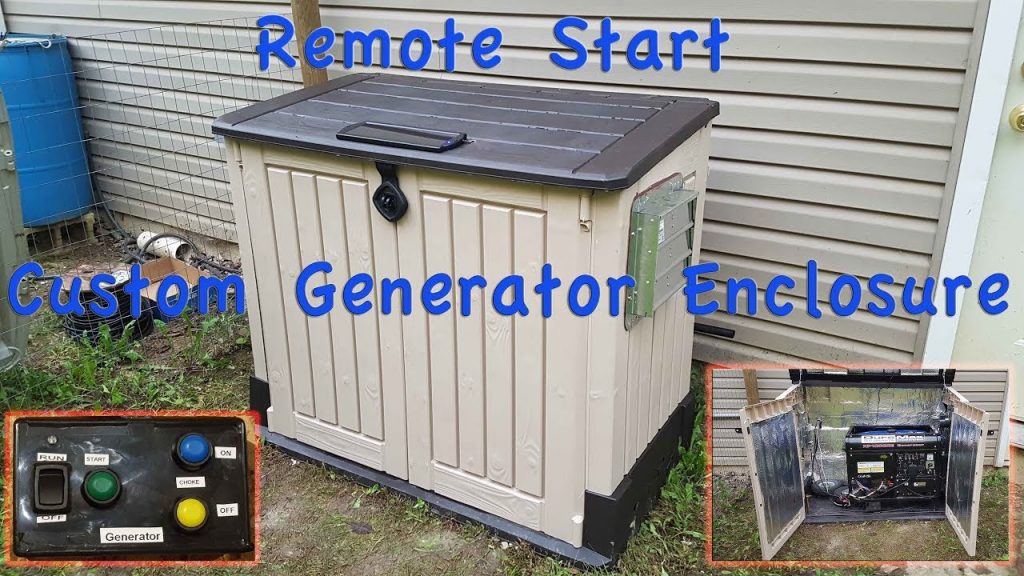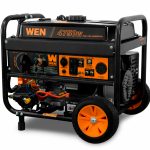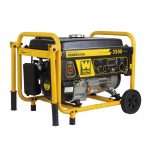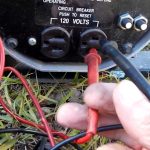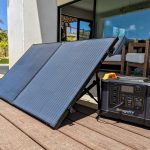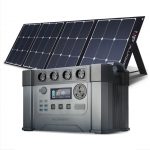Storing a generator outdoors can be a great way to save on space and make access to the generator easier. However, it is important to be aware of some safety considerations when doing so. Outdoor generator storage should only be used for generators that have been designed for outdoor use. It is important to check the manufacturer’s instructions to ensure compatibility. Once you have established that the generator is suitable for outdoor storage, the area must be well ventilated, and the generator should be placed on a stable surface.
It is also important to ensure that the generator is protected from the elements, such as rain and snow. To reduce the risk of fire or electrocution, the generator should be placed at least 3 feet away from any combustible materials. It is also essential that the generator is connected to a breaker for safety reasons. Finally, it is important to routinely check the generator’s condition and to perform regular maintenance. This includes cleaning and checking the fuel lines, filters and air intakes. Following these guidelines will help keep your outdoor generator storage safe and your generator working properly.
Can you keep a generator outside in the winter?
Storing a generator outside in winter can be a tricky decision. Generators are designed to work in all sorts of weather, but some extra precautions should be taken when storing a generator outside in cold temperatures. It’s important to ensure the generator is completely dry before storing it; any moisture buildup can cause corrosion. Additionally, the generator should be protected from snow and ice. A good storage solution is to place the generator in a secure, waterproof shed or box.
If there is no way to store the generator inside, it’s important to purchase a generator cover. This will help to reduce the amount of snow and ice that builds up on the generator and keep it protected. When storing the generator outside in cold temperatures, the oil and fuel should be changed regularly. This will help to ensure the generator remains in proper working order after long-term storage. Finally, make sure to check the generator every few months when it’s stored outside in winter. This will help to ensure any small issues are addressed before they become major problems. Following these steps will help keep the generator in working order for years to come.
Can you store a portable generator outside?
Storing a portable generator outside can be beneficial when it comes to an outdoor generator storage solution. It helps keep your generator safe from the elements, as well as from theft or vandalism. When storing a portable generator outside, there are a few things to consider. Firstly, the generator should be placed in a sheltered area that is free from debris and away from any sources of fuel. This will help to reduce the risk of fire or explosion.
Secondly, it is important to make sure that the generator is securely fastened to the ground to prevent theft or accidental tipping. Finally, it is essential to keep the generator clean and well-maintained to ensure that it works correctly when you need it. When it comes to choosing the right storage solution for your portable generator, there are a few options available. If you have a garden or shed, you can store your generator in there, as long as it is secured properly and away from combustible materials. Alternatively, you could purchase a generator cover or enclosure, which will provide a secure, weatherproof environment for your generator. Overall, storing a portable generator outside can provide a great outdoor generator storage solution. However, it is important to ensure that your generator is stored in a secure area and maintained properly to ensure its longevity and reliability.
How to maintain your portable generator?
To properly maintain your portable generator, here are a few tips:
- Keep your generator in a clean, dry and well-ventilated environment. Make sure the area is away from any combustible items and materials.
- Make sure all connections are tight and secure. Check for any loose cables or components, and tighten or replace them if needed.
- Check the oil level and replace it with fresh oil if needed.
- Regularly check the air filter and replace it if necessary.
- Clean the exterior of your generator regularly to keep it in good working order. Using these tips will help you maintain your portable generator and ensure it is always ready when you need it.
How to store generator outside?
Outdoor generator storage requires some precautions to ensure the generator is properly stored and maintained. First, the generator should be placed in a safe and secure area that is away from any open flames or combustible materials. This will help prevent accidental fires. The generator should also be kept away from any moisture, so it should be covered with either a tarp or an outdoor generator storage shed. This will protect the generator against any harsh weather or debris.
To protect the generator from corrosion, it should be placed on a concrete or pavers pad with a slight incline. This prevents water or debris from collecting around the generator. Finally, the generator should be checked periodically to make sure that everything is in working order. This includes inspecting the hoses, belts, and other parts for any signs of wear and tear. Regular maintenance will also help to increase the generator’s lifespan.
How to connect portable generator at home?
Here are the steps to connect your portable generator at home. Firstly, make sure your generator is in a well-ventilated space with adequate clearance from any combustible materials. Then, connect the generator to your home’s circuit breaker panel. Make sure you turn off the main breaker before making any connections. Next, attach the ground wire and/or a grounding rod to the generator to ensure safety.
Then connect the generator to the circuit breaker using a transfer switch. Finally, plug in any electrical devices you want to power from your generator. Make sure the total wattage you’re using does not exceed the total wattage capacity of your generator. By following these steps, you can easily connect your portable generator at home and keep it safe and secure in outdoor generator storage.
How to build your own generator shed?
It will ensure that your generator is kept out of the elements and away from potential theft. Here is how you can build a generator shed of your own. The first step is to decide where to build the shed. Choose a spot that is relatively level since the shed will need a strong foundation. Make sure to check the local zoning ordinances to make sure that constructing the shed is allowed.
Next, you will need to build the frame of the shed. You will need to acquire the lumber and other materials to construct the frame and assemble it according to the instructions. Once complete, you will need to attach the frame to the foundation. Once the frame is securely attached to the foundation, you will be ready to add the walls and roof of the shed. Build the walls using the appropriate materials such as plywood, siding, or other appropriate materials. Make sure the walls are securely attached to the frame. For the roof, you will need to choose a material such as shingles, metal, or other appropriate materials. Finally, you will need to finish the shed. This will involve applying sealant to the exterior, adding trims, and painting the shed. Make sure to do all the necessary steps to finish the shed properly. Your generator shed is now complete and ready to store your outdoor generator. With your generator securely stored, you can rest assured knowing that it is protected from the elements and theft.
How to start a portable generator safely?
Storing a portable generator outdoors requires special consideration for safety and security. To start a portable generator safely, there are several steps to take. First, be sure to check the fuel tank. If the generator has been sitting for a long period of time, the fuel may have evaporated. If this is the case, fill the tank with fresh fuel before starting the generator.
Second, check for any loose connections on the generator and make sure the air vents are free of debris. Third, make sure the generator is on a level surface to avoid any fuel spills. Fourth, ensure that the generator is at least 20 feet away from any buildings and away from any flammable materials such as gasoline or wood. Finally, read the operator’s manual that came with the generator and follow the manufacturer’s instructions for safe starting. With these steps taken, the portable generator can be started safely.
What is the most efficient portable generator?
A portable generator is a great investment for any outdoor enthusiast. When it comes to outdoor generator storage, the most efficient generator would be a portable one. Portable generators are lightweight and easy to store. They are also easy to move around, so they can be used in multiple locations. Portable generators come in a variety of sizes, so there is sure to be an option that is right for your needs.
The most efficient ones are typically fuel-efficient, so you can power up without spending too much money on fuel. Most efficient portable generators also come with safety features such as overload protection, circuit breakers, and low oil shut-off. This ensures that your generator will not be damaged in the event of an overload or a power outage. Portable generators are a convenient and efficient way to keep your devices powered up outdoors. With the right generator and proper storage, you can rest assured that you will have the power you need for any outdoor activity.
